Study on Malfunction of OCR Due to Penetration of DER into Power Distribution System with SFCL
Abstract
:1. Introduction
2. Modeling for The Fault Simulation
2.1. Simulated Power Distribution System Modeling
2.2. OCR’s Characteristic Equation Modeling
2.3. Trigger-Type SFCL Modeling
3. Simulation Results
- Case 1: fault simulation without DER and SFCL
- Case 2: fault simulation without DER with SFCL
- Case 3: fault simulation with DER without SFCL
- Case 4: fault simulation with DER and SFCL
3.1. Fault Simulations of Sympathetic Tripping Case
3.2. Fault Simulations of Protection Blinding Case
3.3. Discussion
4. Conclusions
Author Contributions
Funding
Conflicts of Interest
References
- Faisal, M.; Hannan, M.A.; Ker, P.J.; Hussain, A.; Mansor, M.B.; Blaabjerg, F. Review of energy storage system technologies in microgrid applications: Issues and challenges. IEEE Access 2018, 6, 35143–35164. [Google Scholar] [CrossRef]
- Raj, N.T.; Iniyan, S.; Goic, R. A review of renewable energy based cogeneration technologies. Renew. Sustain. Energy Rev. 2011, 15, 3640–3648. [Google Scholar] [CrossRef]
- Shah, K.K.; Mundada, A.S.; Pearce, J.M. Performance of US hybrid distributed energy systems: Solar photovoltaic, battery and combined heat and power. Energy Convers. Manag. 2015, 105, 71–80. [Google Scholar] [CrossRef]
- Brenna, M.; Foiadelli, F.; Longo, M.; Abegaz, T.D. Integration and Optimization of Renewables and Storages for Rural Electrification. Sustainability 2016, 8, 982. [Google Scholar] [CrossRef]
- Zayandehroodi, H.; Mohamed, A.; Shareef, H.; Mohammadjafari, M. A Comprehensive review of protection coordination methods in power distribution systems in the presence of DG. Prz. Elektrotechniczny 2011, 87, 142–148. [Google Scholar]
- Shahzad, U.; Kahrobaee, S.; Asgarpoor, S. Protection of Distributed Generation: Challenges and Solutions. Energy Power Eng. 2017, 9, 614. [Google Scholar] [CrossRef]
- Papaspiliotopoulos, V.A.; Kleftakis, V.A.; Kotsampopoulos, P.C.; Korres, G.N.; Hatziargyriou, N.D. Hardware-in-the-loop simulation for protection blinding and sympathetic tripping in distribution grids with high penetration of distributed generation. In Proceedings of the MedPower, Athens, Greece, 2–5 November 2014. [Google Scholar]
- Maki, K.; Repo, S.; Jarventausta, P. Protection coordination to meet the requirements of blinding problems caused by distributed generation. WSEAS Trans. Circuits Syst. 2005, 4, 674. [Google Scholar]
- Lim, S.-H.; Lim, S.-T. Current Limiting and Recovery Characteristics of a Trigger-Type SFCL Using Double Quench. IEEE Trans. Appl. Supercond. 2018, 28, 17572499. [Google Scholar] [CrossRef]
- Lim, S.-H.; Han, T.-H.; Cho, Y.-S.; Choi, H.-S.; Han, B.-S.; Lee, S.-W. Quench characteristics of HTSC elements in integrated three-phase flux-lock type SFCL according to ground-fault types. Phys. C Supercond. Appl. 2007, 463, 1198–1203. [Google Scholar] [CrossRef]
- Hyun, O.-B.; Park, K.-B.; Sim, J.; Kim, H.-R.; Yim, S.-W.; Oh, I.-S. Introduction of a Hybrid SFCL in KEPCO Grid and Local Points at Issue. IEEE Trans. Appl. Supercond. 2009, 19, 1946–1949. [Google Scholar] [CrossRef]
- Lim, S.-H.; Park, M.-K. Analysis on Protection Coordination of OCRs Using Voltage Components for the Application of SFCL in a Power Distribution System with DG. IEEE Trans. Appl. Supercond. 2021, 31, 20994711. [Google Scholar] [CrossRef]
- Choi, S.-J.; Lim, S.H. Enhancement on the Fault Ride through Capability of Power Distribution Systems Linked by Distributed Generation due to the Impedance of Superconducting Fault Current Limiters. Energies 2019, 12, 4810. [Google Scholar] [CrossRef]
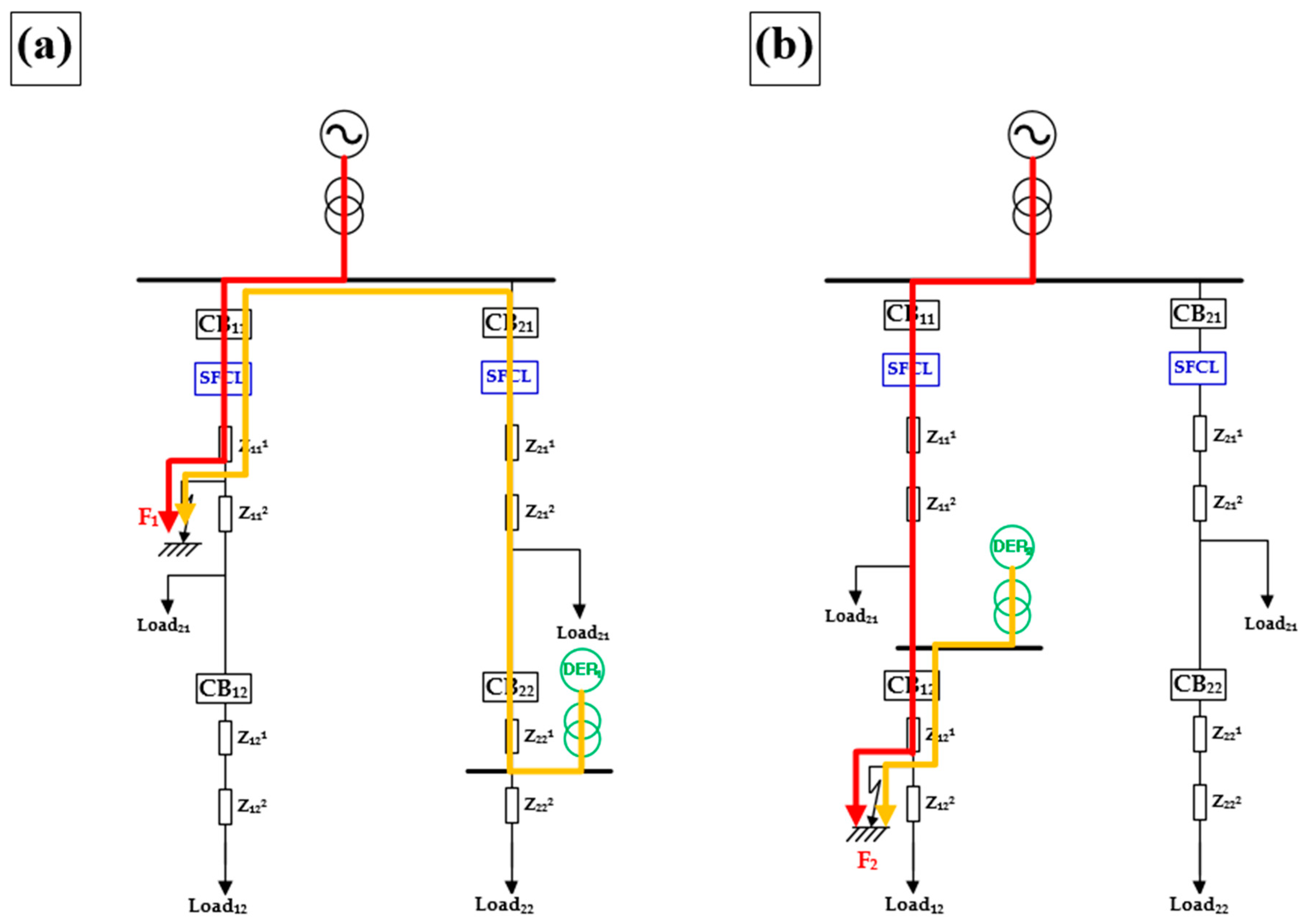
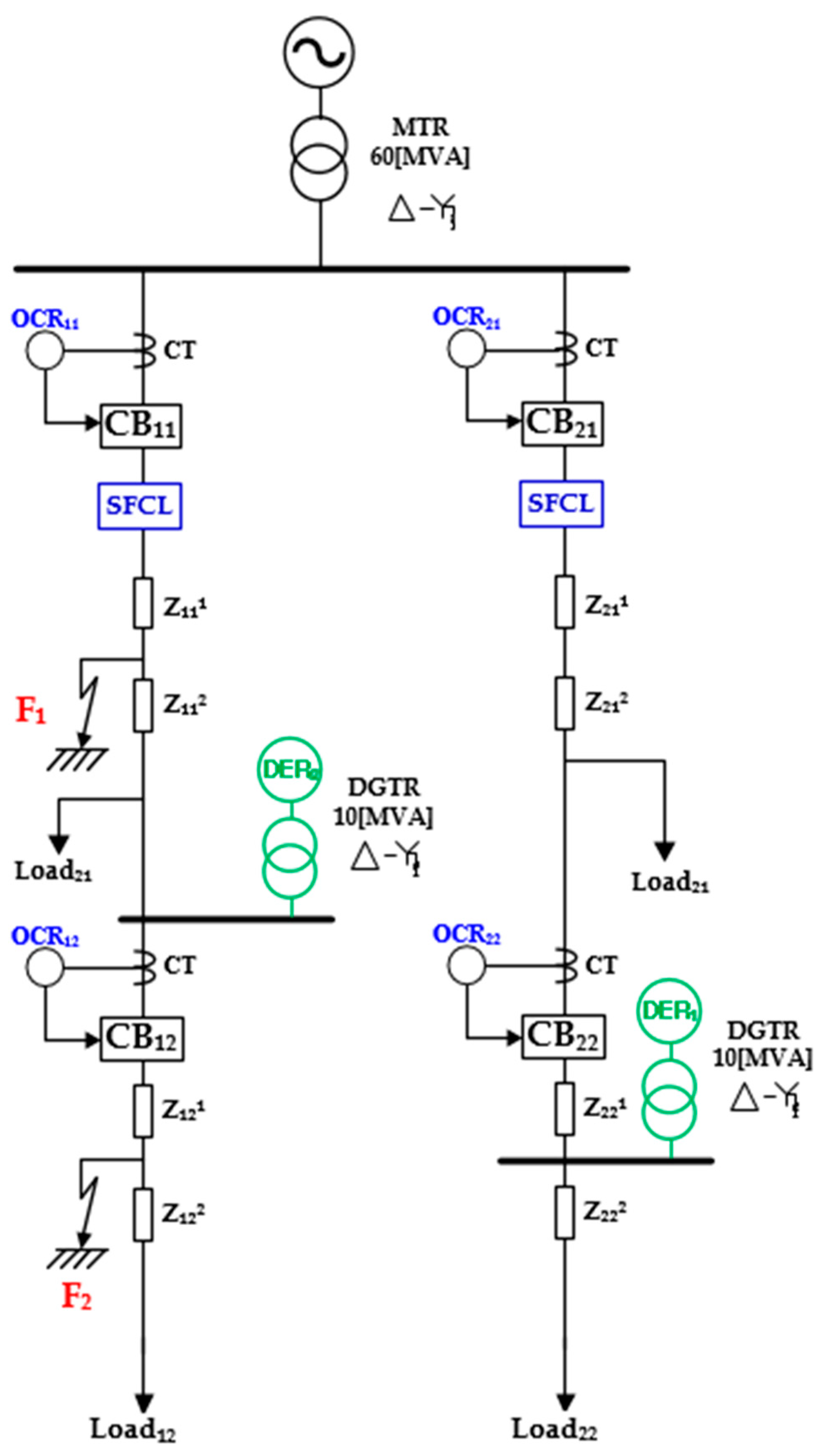

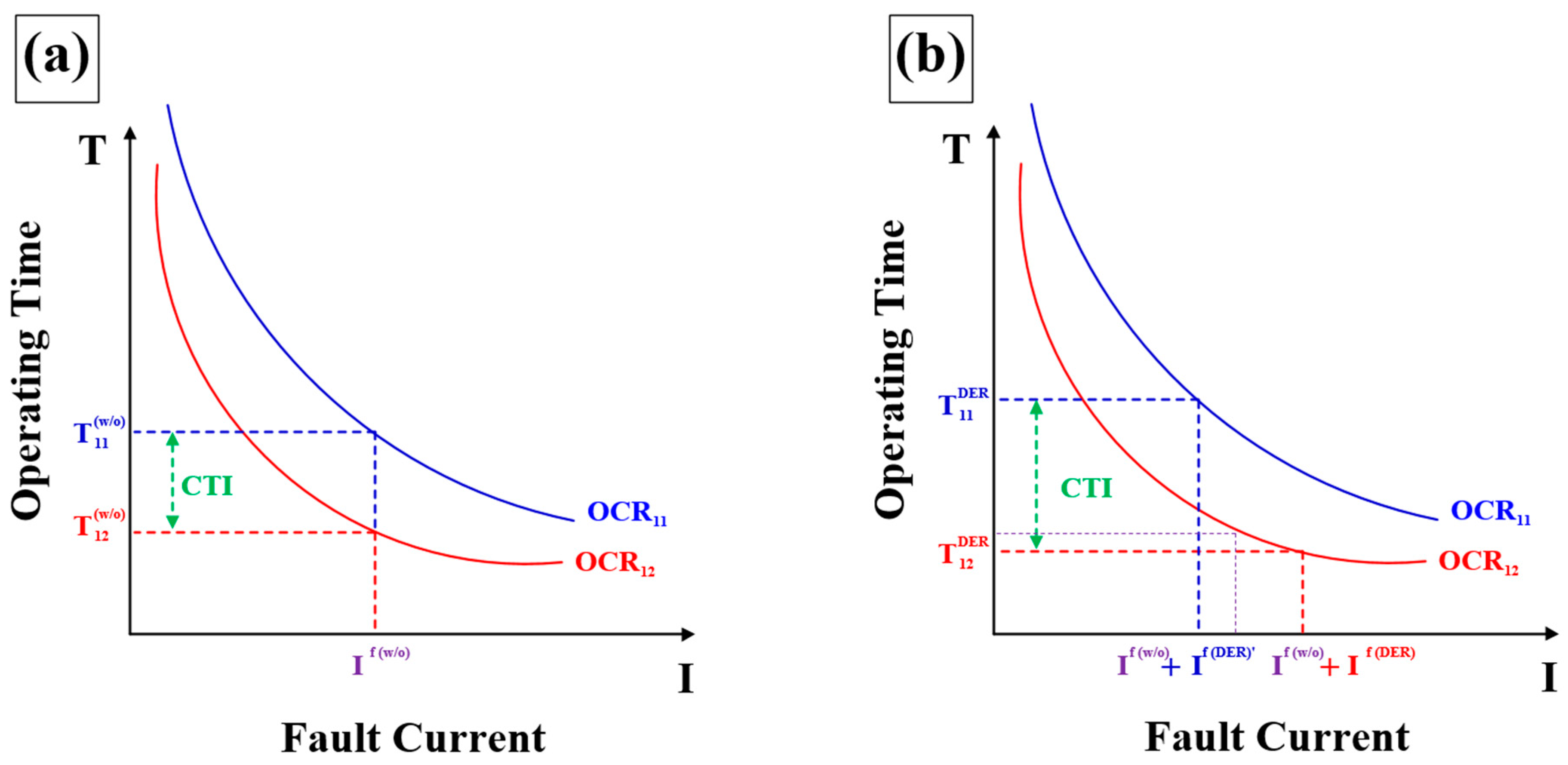
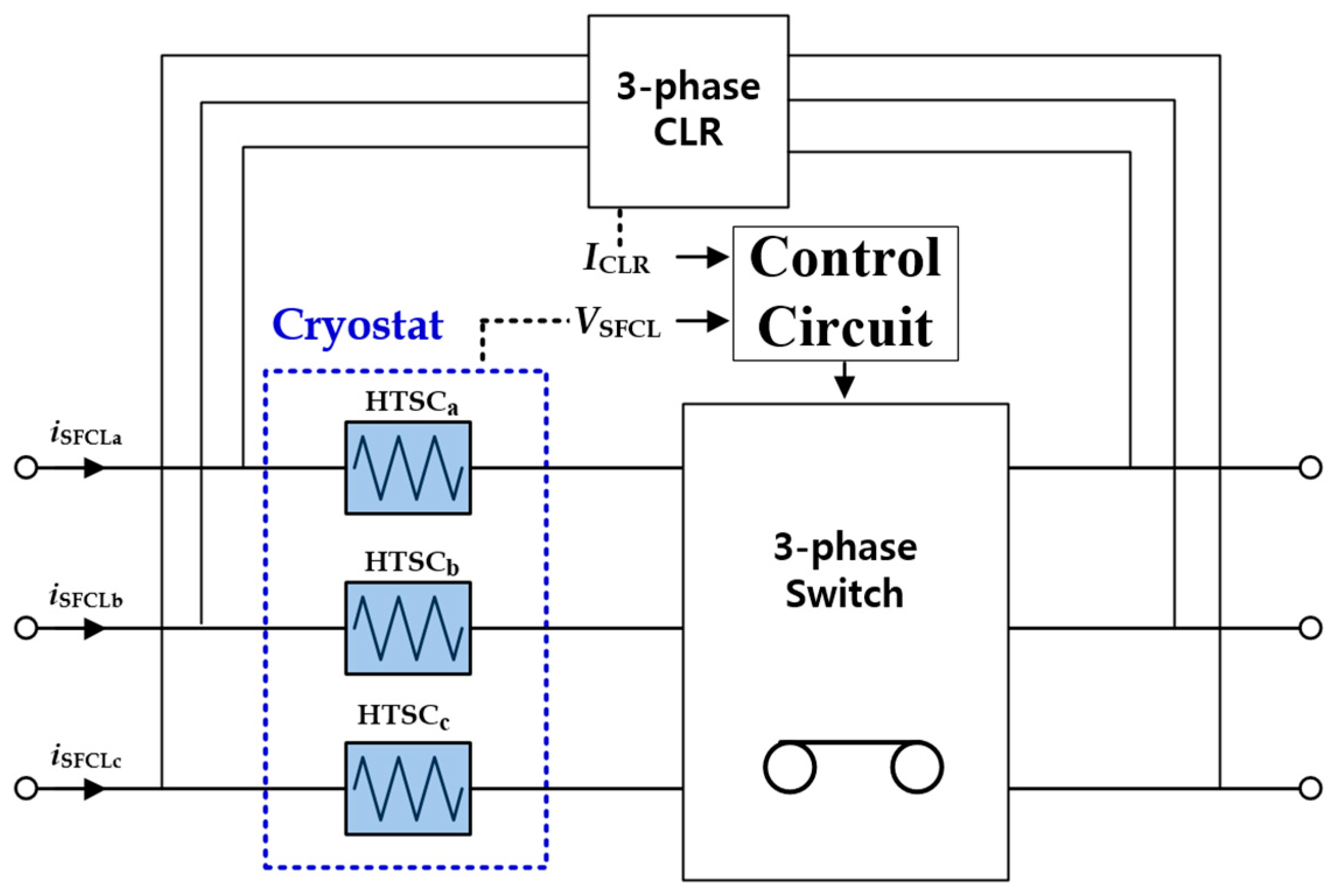

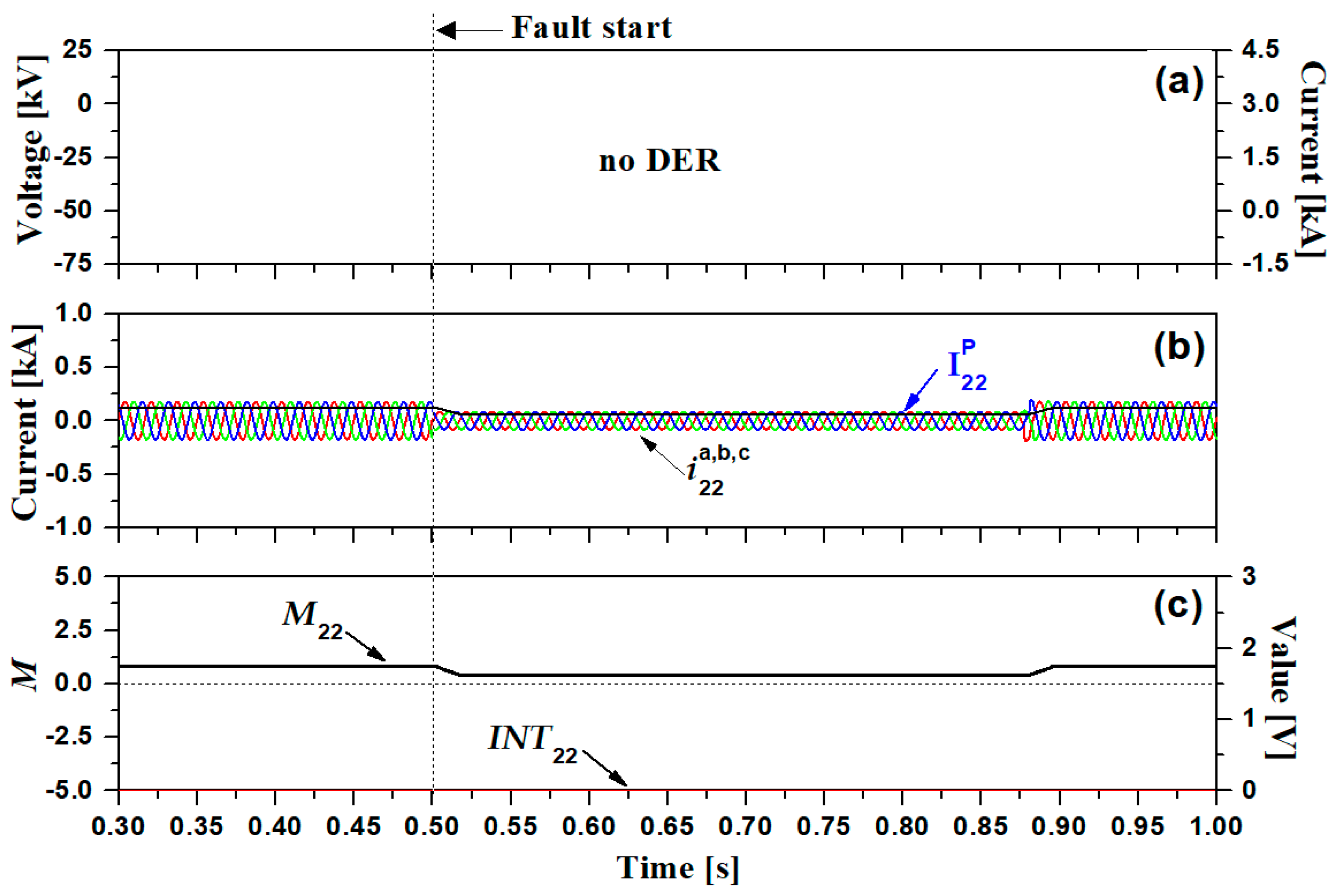

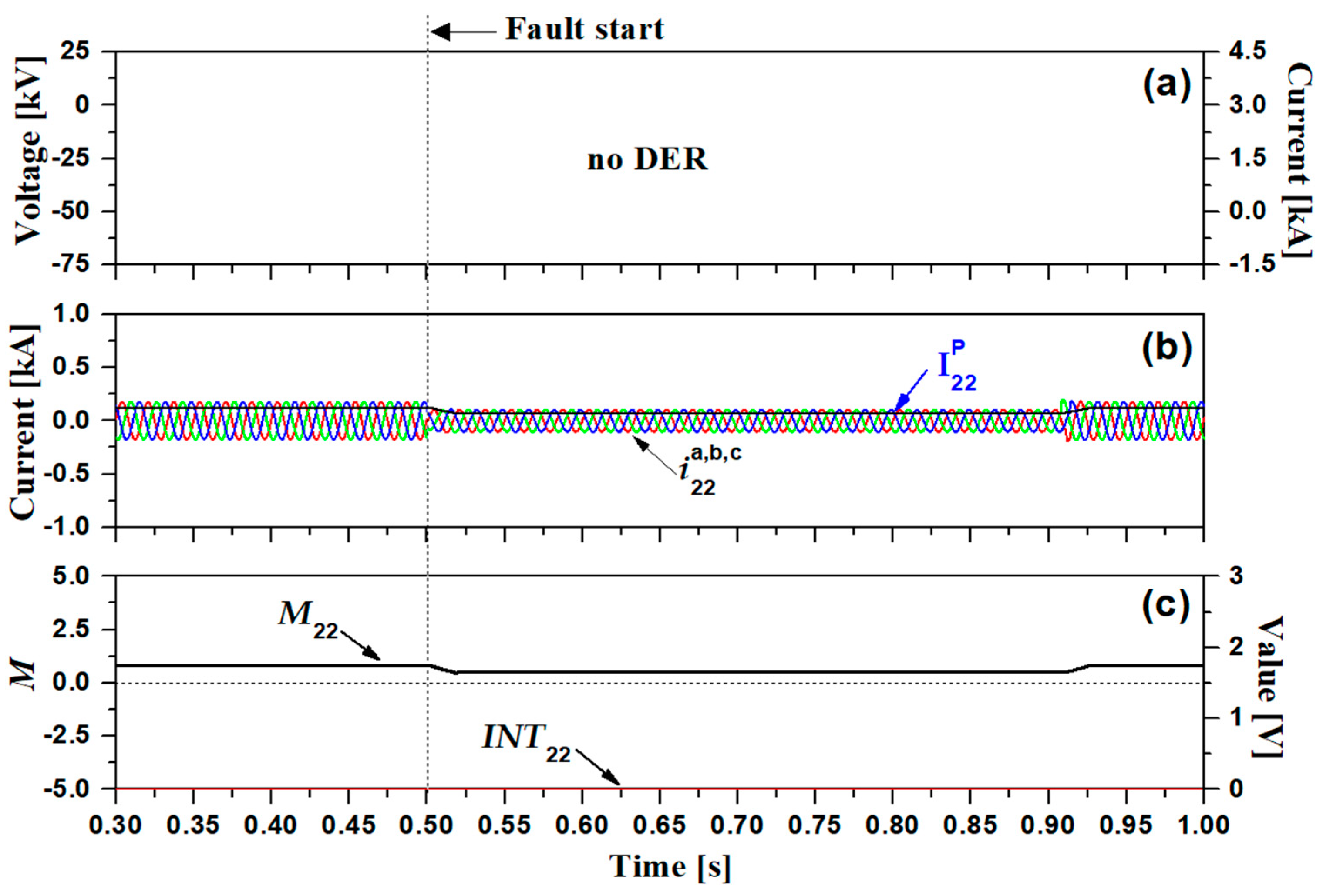
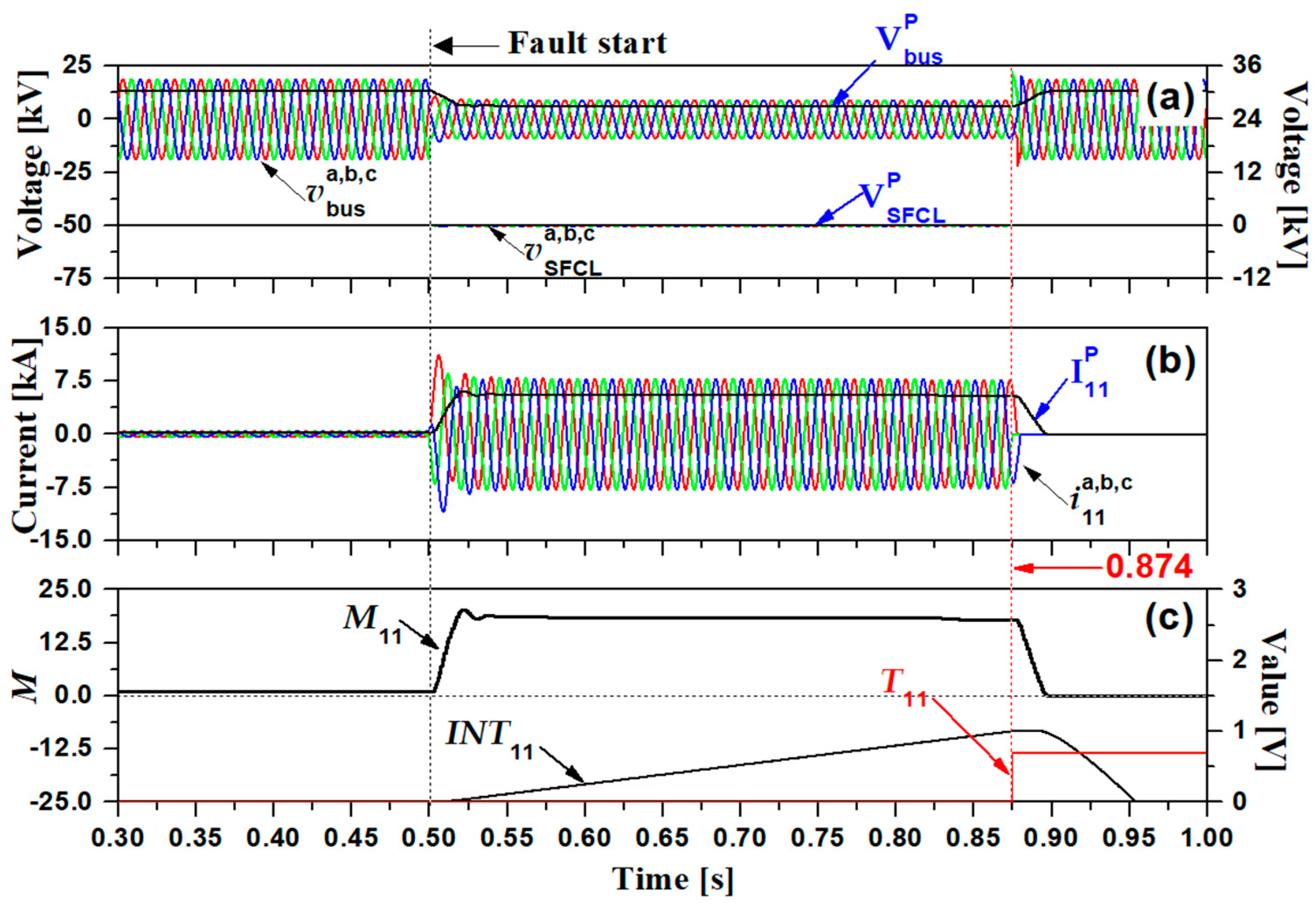


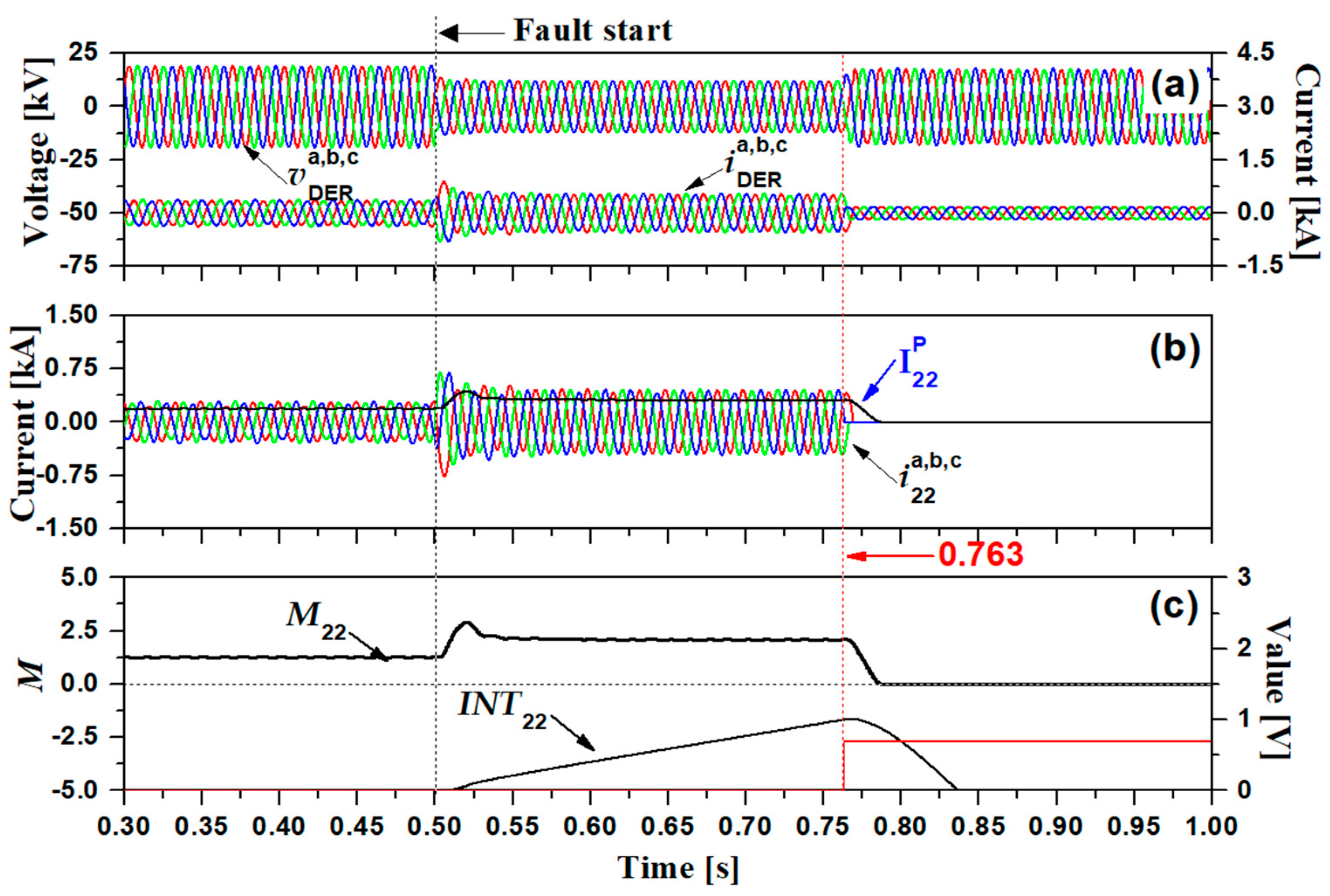
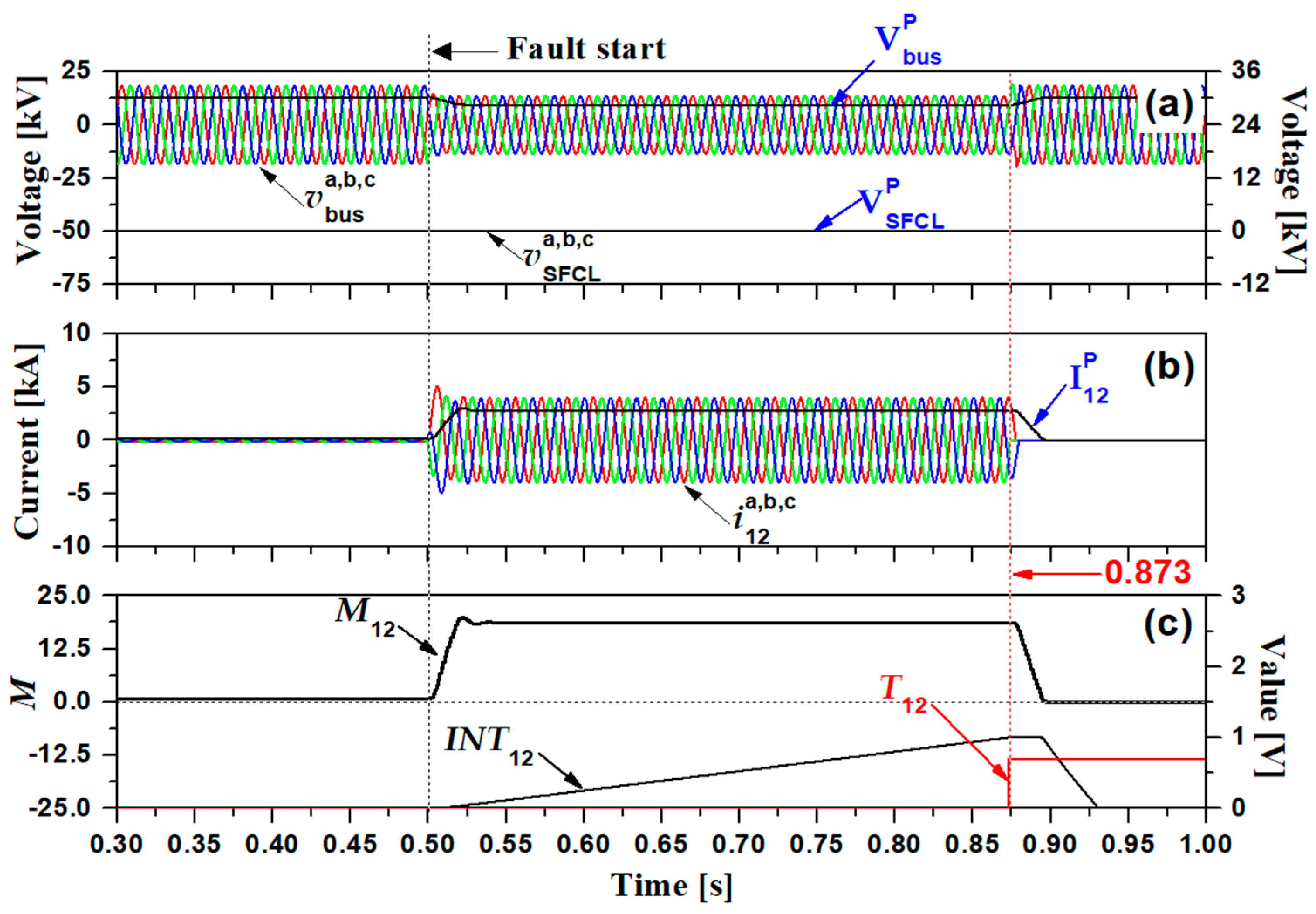
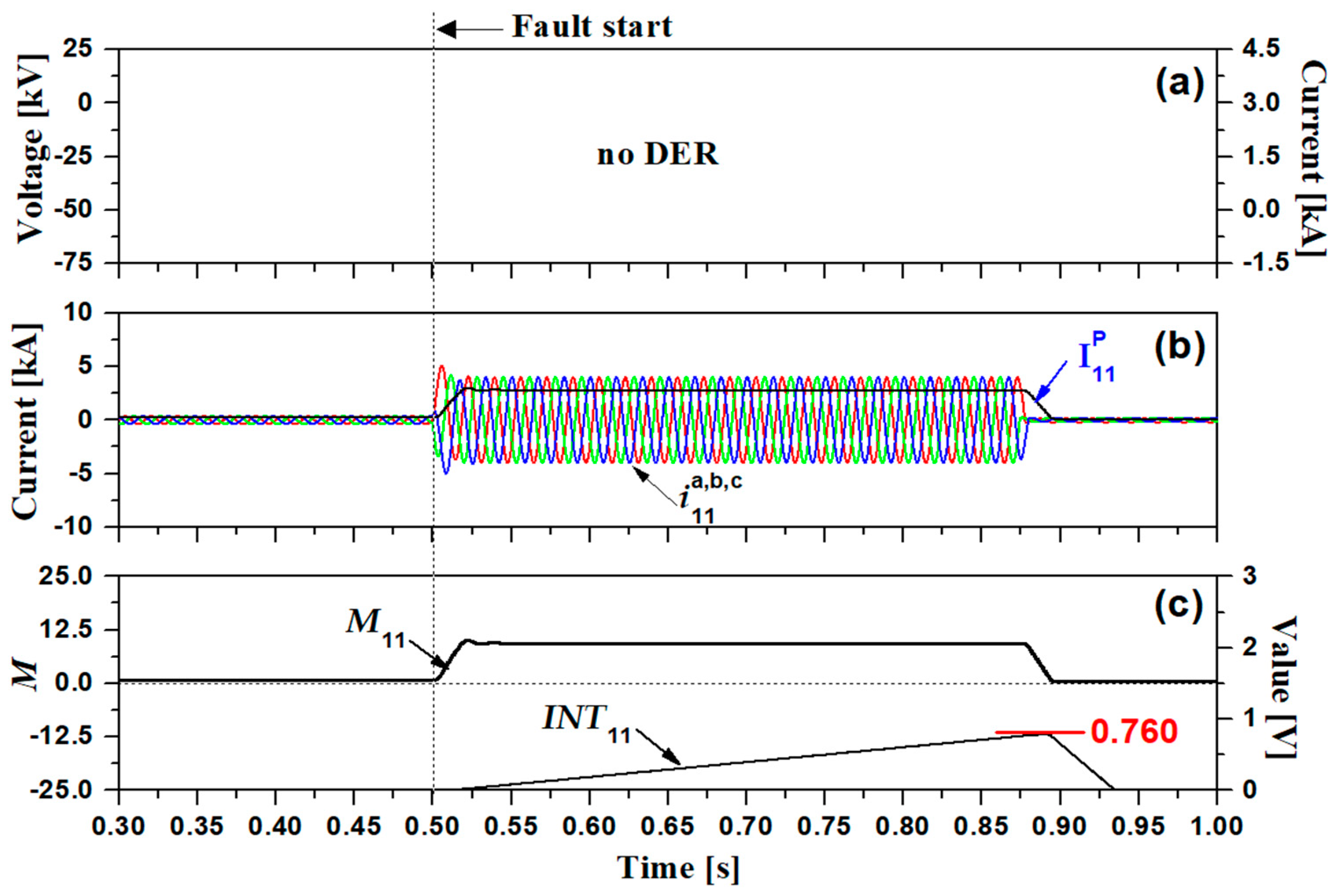


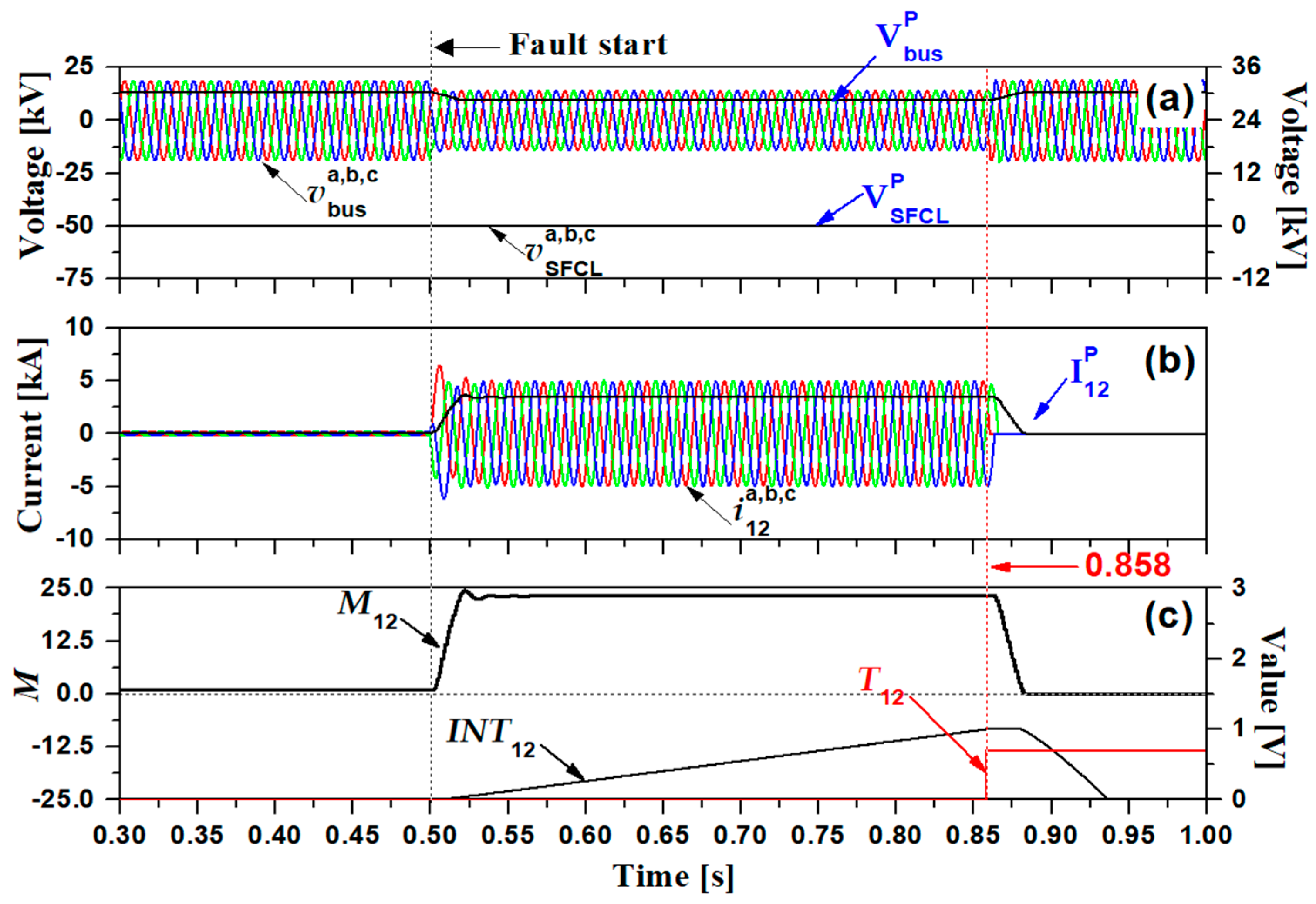
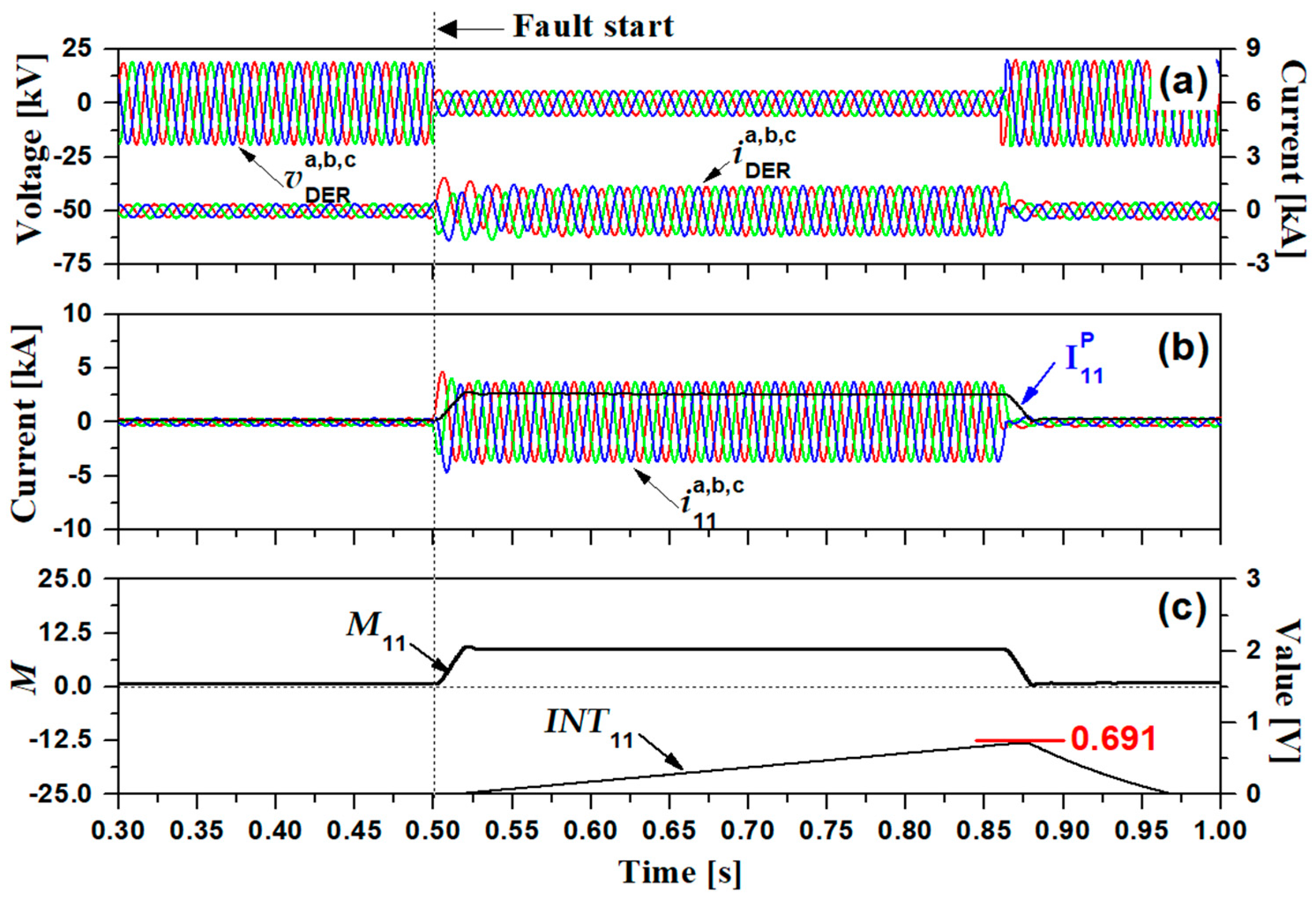
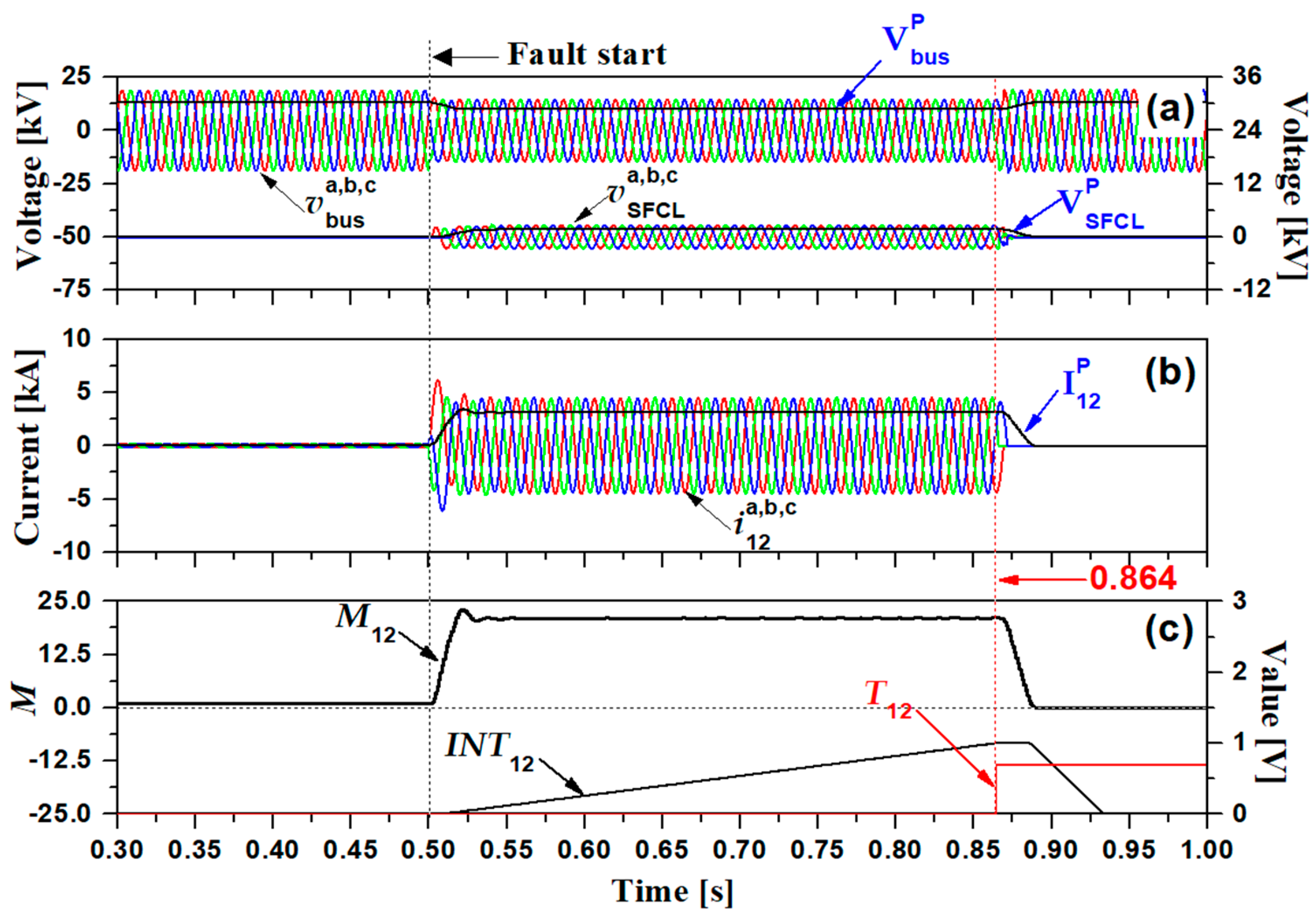
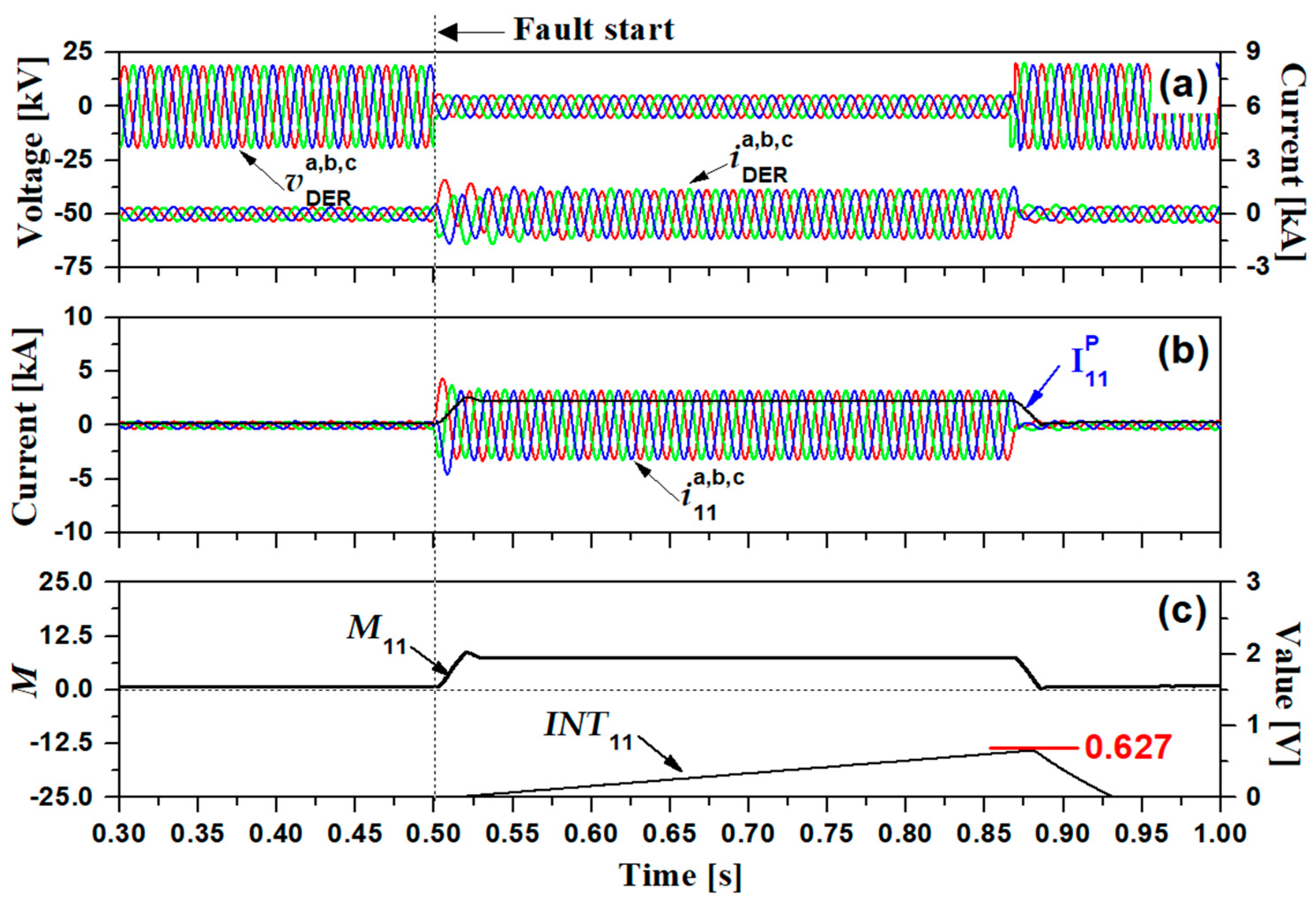
| Index | Value | Unit | |
|---|---|---|---|
| Source & Transformer | Voltage (main) | 154 j1.0 | kV % |
| Leakage Reactance (main) | |||
| Capacity (TRmain) | 60 154/22.9 | MVA kV | |
| Transformer Ratio (TRmain) | |||
| Active power (PDER) | 4 | MW | |
| Capacity (TRDER) | 10 4/22.9 | MVA kV | |
| Transformer Ratio (TRDER) | |||
| Distribution Line | Line Impedance (Z1) | 3.86 + j7.42 | %Ω/km |
| Line Impedance (Z0) | 9.87 + j22.68 | %Ω/km | |
| Line Length (Z11, Z12, Z21, Z22) | 5 | km | |
| Load | Load (Load11, Load12, Load21, Load22) | 5 | MW |
| Power factor (Load11, Load12, Load21, Load22) | 0.95 | - |
| Index | Value | Unit | |
|---|---|---|---|
| CB11 | TD | 0.3 | - |
| Ipickup | 0.3 | kA | |
| CB12 | TD | 0.3 | - |
| Ipickup | 0.15 | kA | |
| CB22 | TD | 0.02 | - |
| Ipickup | 0.15 | kA | |
| Common | A | 39.85 | - |
| B | 1.084 | - | |
| p | 1.95 | - |
| Index | Value | Unit | |
|---|---|---|---|
| HTSC & CLR | Convergence resistance (Rn) | 2 | Ω |
| Critical current (IC) | 1.5 | kA | |
| Current limiting reactor (CLR) | j0.8 | Ω | |
| SW | Vset | 1 | kV |
| Ireset | 0.5 | kA |
| Trip Time of OCR11 | Trip Time of OCR22 | Note | |
|---|---|---|---|
| Case1 | 0.877 [s] | - | |
| Case2 | 0.907 [s] | - | |
| Case3 | 0.874 [s] | 0.818 [s] | OCR22′s sympathetic tripping |
| Case4 | 0.904 [s] | 0.763 [s] | OCR22′s sympathetic tripping |
| Trip Time of OCR12 | INT Value of OCR11 | Note | |
|---|---|---|---|
| Case1 | 0.873 [s] | 0.760 | - |
| Case2 | 0.886 [s] | 0.711 | Delayed trip time of OCR12, Decreased INT value of OCR11 |
| Case3 | 0.858 [s] | 0.691 | Faster trip time of OCR12, Decreased INT value of OCR11 |
| Case4 | 0.864 [s] | 0.627 | Faster trip time of OCR12, Decreased INT value of OCR11 |
Disclaimer/Publisher’s Note: The statements, opinions and data contained in all publications are solely those of the individual author(s) and contributor(s) and not of MDPI and/or the editor(s). MDPI and/or the editor(s) disclaim responsibility for any injury to people or property resulting from any ideas, methods, instructions or products referred to in the content. |
© 2023 by the authors. Licensee MDPI, Basel, Switzerland. This article is an open access article distributed under the terms and conditions of the Creative Commons Attribution (CC BY) license (https://creativecommons.org/licenses/by/4.0/).
Share and Cite
Park, M.-K.; Lim, S.-H. Study on Malfunction of OCR Due to Penetration of DER into Power Distribution System with SFCL. Energies 2023, 16, 6137. https://doi.org/10.3390/en16176137
Park M-K, Lim S-H. Study on Malfunction of OCR Due to Penetration of DER into Power Distribution System with SFCL. Energies. 2023; 16(17):6137. https://doi.org/10.3390/en16176137
Chicago/Turabian StylePark, Min-Ki, and Sung-Hun Lim. 2023. "Study on Malfunction of OCR Due to Penetration of DER into Power Distribution System with SFCL" Energies 16, no. 17: 6137. https://doi.org/10.3390/en16176137
APA StylePark, M.-K., & Lim, S.-H. (2023). Study on Malfunction of OCR Due to Penetration of DER into Power Distribution System with SFCL. Energies, 16(17), 6137. https://doi.org/10.3390/en16176137





